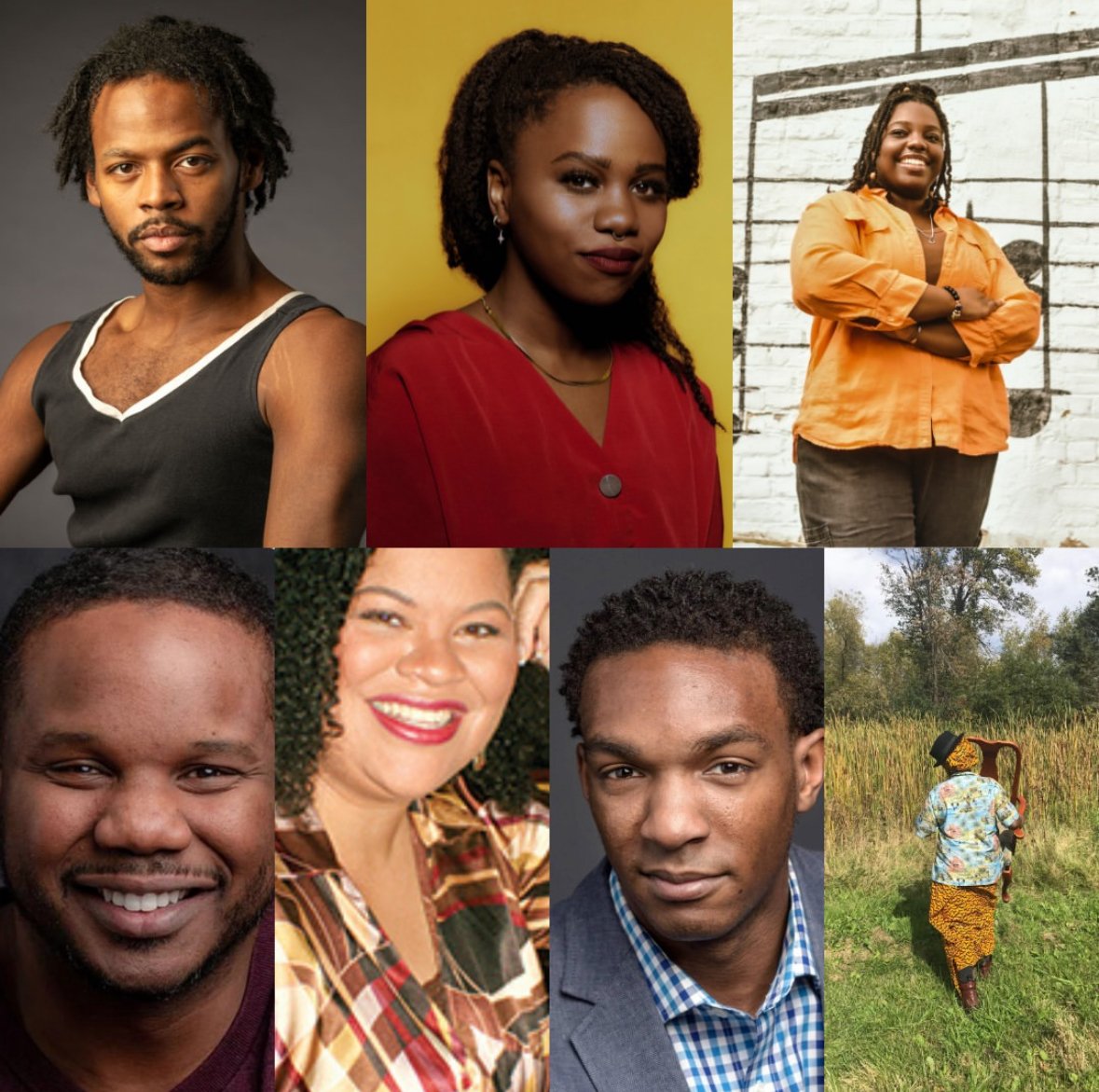In Conversation with Amira McLendon, Visiting Curator in Residence
By Sinead Quinn
In their emotional and engaging exhibition Night and Day: Murals, Memory, and Movement, Memorialize the Movement (MTM) converses with dual themes of grief and joy in reflecting on the Minneapolis Uprising of 2020 and the murals born from it. I had the privilege of communicating with Amira McLendon, Executive Director of MTM and one of the 2025-2026 Amy Marie Sears Memorial Visiting Curators in Residence, along with Leesa Kelly, Collections Manager of MTM.
When asked whether removing the murals from where they were created altered their meaning, McLendon explained the storefront-like wall structures in the Frey Theatre were constructed to remind visitors of the murals’ origins. She added, “We’re not going to be able to truly recreate the physical context, whether they’re outside, like at our Justice for George exhibitions, or in a gallery. It’s important to remember that many of the murals were created spontaneously…when businesses boarded up their storefronts. As those storefronts began to reopen, the plywood itself had to come down. With that, I think the murals lost their original context the moment they were removed from the buildings they were created on.”
However, that does not undermine their influence or power. As McLendon explained, “Our goal with these exhibitions and displays is to make sure these murals can continue to be seen and felt by the communities they were created in.” In fact, the gallery context lends these murals a different kind of potency. “The murals, although in a new space,” McLendon explained, “are the launchpad to evoke those memories [of 2020] and hopefully reignite your motivation for change had it ever been quenched.”
The exhibition, which is split between the Catherine G. Murphy Gallery and Frey Theater, lends itself to unique perspectives and challenges. “We learned that there were many things we couldn’t do in there that we could in a gallery space and vice versa,” McLendon explained. Taking advantage of the Frey Theater’s audiovisual and lighting capabilities made for a highly immersive mural-viewing experience, enhanced through music and “simulat[ing] night time indoors.”
“The true magic of these spaces comes from how we’re able to collaborate with the teams that man them to create new and engaging experiences,” McLendon said. She emphasized the importance of students as changemakers. “Our hope is to inspire curiosity in anyone that engages with us to think critically about the space and time we occupy and the role you play or want to play in it.”
When asked how these murals reflect larger movements of Black art and culture, and whether they form their own genre of art, McLendon noted that Black and non-Black artists alike created murals in 2020 to express their emotions. “It’s all a feedback loop,” McLendon explained, “The times called the artists to create, then their art reflected reality back to us, no matter the medium or form.”
“I think the act of so many artists taking to using plywood as a canvas…is a clear shared aesthetic that would define said genre,” she added. McLendon also drew attention to the motifs that appeared throughout the murals, such as Seitu Ken Jones’ Blues for George stencil, the raised fist symbol and the phrases “Black Lives Matter,” “Say Their Names” and “Justice for George,” contributing to the murals representing their own genre.
In alignment with its themes of unity and community, Night and Day has hosted a remarkable amount of related programming. During the Oct. 14 panel discussion with mural artists Lissa Karpeh and Bayou Bay, a main discussion point was the role institutions play in aiding and conserving art and racism alike. Both artists concurred that MTM is capable of activating murals in different ways than large museums and institutions are. With regards to their art being displayed on the St. Kate’s campus, Bayou Bay expressed that he is less frustrated by his work appearing in these spaces than by the fact that we live within the confines of institutions and empires. Karpeh explained that this visibility makes people uncomfortable and thereby triggers vital conversations. The panel is one example of MTM’s commitment to bringing the artists back to their work.
Night and Day will run until Nov. 15, 2025. Gallery hours are Tuesday-Saturday, 12-5pm or by appointment. If you want to support Memorialize the Movement’s mission, you can donate here. The final related programming event is Aftermath, a performance and conversation about how communities heal and move forward after an incident of police violence, at the O’Shaugnessy on Nov. 14 at 6:30pm.
Special thanks to Olivia Lien ‘26 (English/History, Linguistics minor) for her notes from the Oct. 14 panel discussion.







